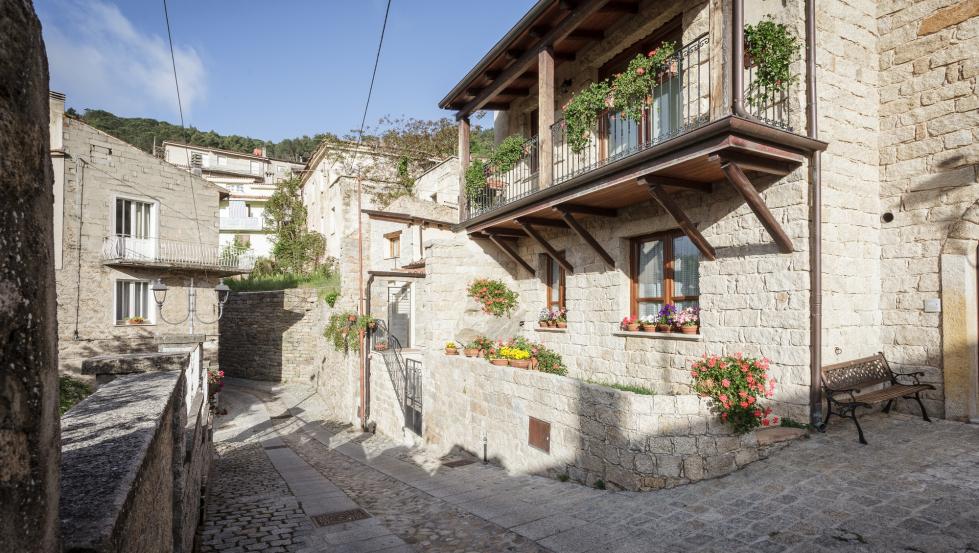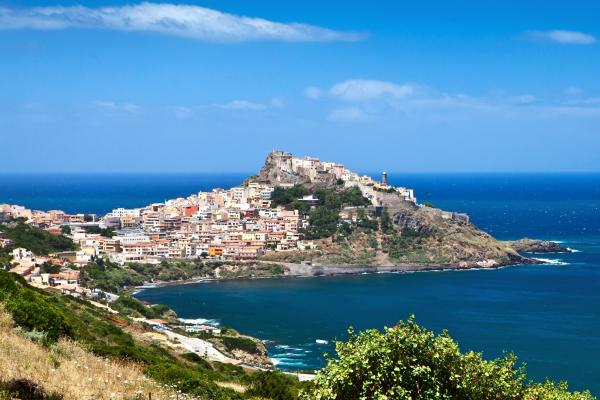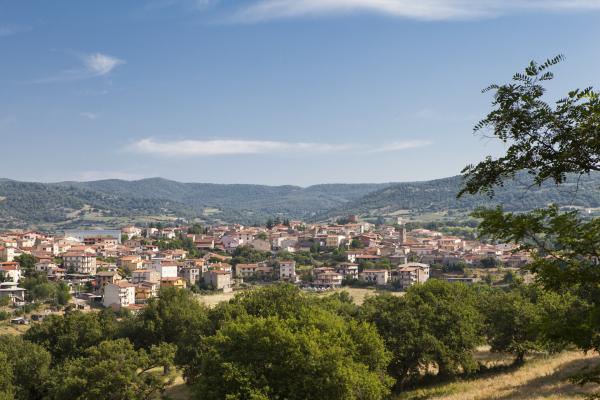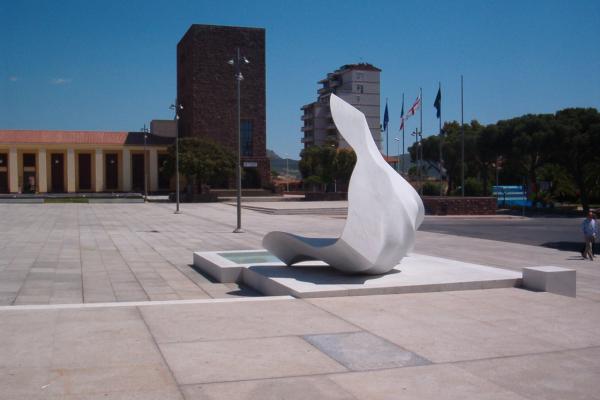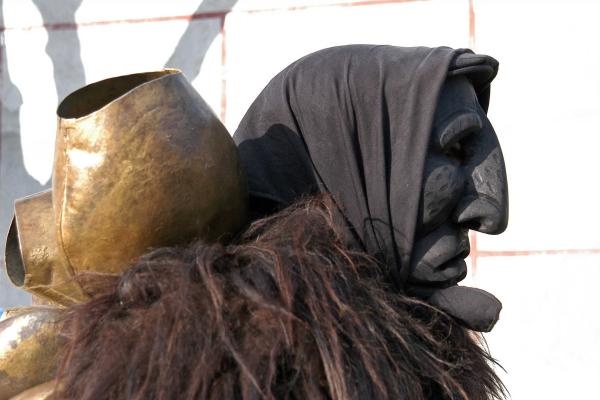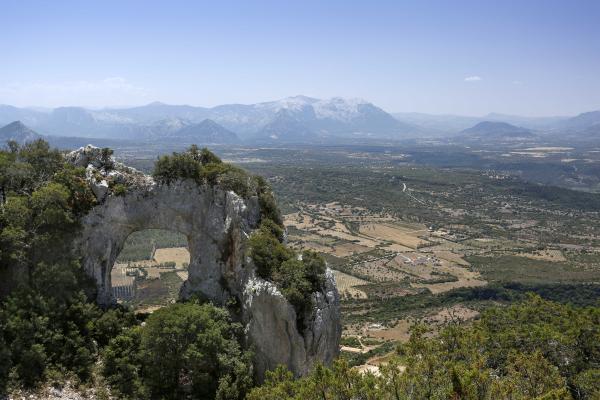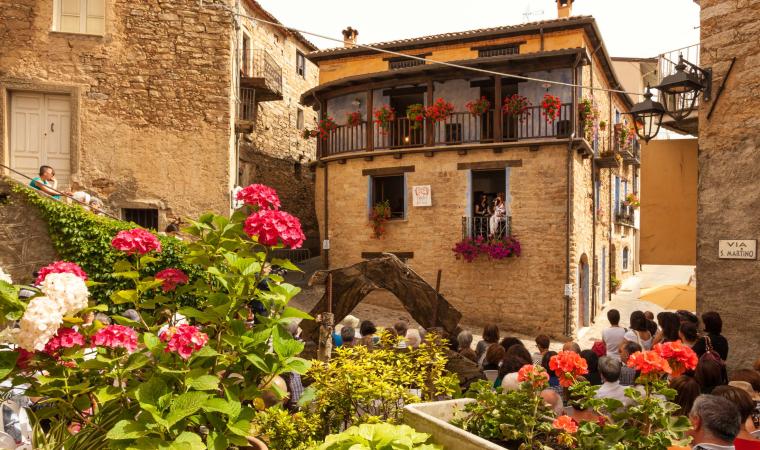
It is like nowhere else in the world. This is the Sardinia seen by the first travellers and by the writers of the past: they describe a land that emerges slowly from the sea, and tell of the natural spectacle that gradually appears, bathed in intense light. Mountains that sink to the coast, sometimes gently, sometimes suddenly, frame ever-changing scenery. It is never very far from the sea to the hinterland, and the route is dotted with small, traditional villages, the intimate 'soul' of Sardinia. On the roads that lead to the heart of the island, welcomed by the warm hospitality of its communities, you can discover the authentic life and ancient traditions of the villages. You can lose yourself in criss-crossed pavved alleyways, and come aross ancient buildings, natural monuments, archaeological sites, and discover masterpieces of artisan work and unequalled cuisine. You will experience the essence of Sardinia, and its most genuine identity.
The itinerary leaves from the extreme north-western tip, from a coastal village, Stintino, which was founded at the start of the 20th century by Ligurian families, and was once the home of fishermen, but is now a well-known tourist venue, not least because of its picture postcard beach, La Pelosa. On the opposite point of the Gulf of Asinara, Castelsardo is reflected in the sea, perched on a promontory that towers over the water, it was founded by the Doria family from Genoa in 1100. It is one of the most beautiful villages in Italy, thanks to its natural surroundings, craftsmanship and archaeology: the Roccia dell’Elefante is remarkable, as are the 'red' cliffs and the characteristic Lunissanti rituals during Holy Week. From Anglona to deepest Gallura: in the foothills of Limbara, you can stop at Aggius, the centre of the agropastoral tradition, soaked in spirituality, with stone houses and textiles, and surrounded by stazzi buildings. On the nothern side of the massif there is Tempio Pausania, a town 'carved' in granite and a newcomer among the 'Most Beautiful villages in Italy'. On the southern side, Berchidda is a must-see destination. The town is at its best for the Time in Jazz festival: the piazzas become concert halls and the streets are enlivened by colours and sounds. This is the home of vermentino, which you should pair with local delicacies. Other characteristic places stand out in the heart of northern Sardinia, such as Burgos, which lies at the foot of the Goceano castle.
The trip to the Baronìe is short: it is worth taking a stop at Galtellì, the small village nestled against the foothills of mount Tuttavista which has received the 'orange flag' for sustainability. The cobbled streets and stone houses are the setting for an extraordinary concentration of sanctuaries and Christian symbols which make it a destination for pilgrimage throughout the year. The scenery inspired Nobel prize winner Grazia Deledda. Further north is Posada, a settlement at the feet of the Fava castle, a symbol of the late Medieval period. The transition to the Barbagie region is immediate. Around thirty small localities take centre stage in the passionate and tasty Autunn in Barbagia festival. Canto a Tenore, which is listed as UNESCO Intangible World Heritage, accompanies any visit to Bitti, a village set deep in a valley from where the sanctuary-village su Romanzesu rises. Then there is Oliena, another village with an orange flag, where the essence and charm of the Barbagia area are intact: textiles, filigree jewellery, and pecorino cheese and the Nepente wine from the fields. Around the Lanaittu valley, the site of the village of Tiscali, their are the sa Oche and su Bentu caves and the su Gologone spring.
Mamoiada is pervaded by the intense scent of vines: it is the country of wine, which will accompany you during the ancient rituals of Mamuthones and Issohadores. The murals that colour the houses of Orgosolo make it an open-air museum, surrounded by natural monuments: the su Suercone sinkhole and the su Gorroppu canyon. Further south there rises spectacular Gavoi, another 'orange' village: sourrounded by wooded mountains, caressed by Lake Gusana. You can admire glimpses of houses in granite and balconies with flowers from where writers, actors and intellectuals make their presentations for the Isola delle Storie literary festival. In the Mandrolisai, the westernmost of the Barbagie, the lights and colours of one of the most beautiful villages in Italy Atzara, stand out. In a labyrinth of alleyways, you can discover medieval houses with sculpted façades. You can lose yourself looking at the sweep of vineyards and cherry trees that have inspired many artists.
Between the north and the centre there are the villages of the Marghine; villages located in fairy-tale scenery, like Silanus, an authentic village with an ancient history and traditions, archeological remains, old civil and religious buildings, as well as top-class culture and excellent food. On the western edge you will find Bosa, a truly unique place in Sardinia. Its multi-coloured houses clamber up a hill dominated by the castle of Serravalle and are reflected in the River Temo. The walk along the river and the Ponte Vecchio lead visitors to discover the old tanneries. You will be welcomed with a glass of malvasia wine and enraptured by coral jewels, asphodel baskets and precious fabrics. Nearby there are dozens of beautiful coastal places. Planargia and Montiferru have an array of small and evocative locations, such as Flussio, Sennariolo, Tresnuraghes and the jewel of a place, Santu Lussurgiu, surrounded by ancient forests. Further north, if we go towards Alghero, you can discover other unusual things, especially tiny Monteleone Rocca Doria. Whereas further south there are the villages of the Barigadu, including Bonarcado and Neoneli, which is celebrated for its choir.
Laconi, is set in greenery just before the elevation of the Sarcidano, and is celebrated for Saint Ignazio. His house, the local museum and the church that is dedicated to him are the stages of a religious itinerary. At one time everything revolved around a noble family: a visit should be made to the Aymerich park and castle and the family's city palace, which houses the museum of prehistoric Sardinian statues. On the Sarcidano plateau, it is worth making a visit to Orroli, a village that is set between the Mulargia and Flumendosa lakes – the latter is served by a Mississippi-style boat – and Nuraghe buildings, including one of the most imposing and famous early buildings on the island, the nuraghe Arrubiu. Further south, in the Gerrei, you can find another extensive village-museum, Armungia, whose historic centre developed around the nuraghe Armungia (15th to 14th century BC). Further east, the villages of Ogliastra star in the itinerant event Primavera nel cuore della Sardegna. Along with Marghine and Baronia, Ulassai stands out, a centre of art and culture, surrounded by a unique natural setting, including the su Marmuri cave.
In the Medio Campidano a stop should be made at Sardara, a village that boasts an Orange Flag. It is associated since Antiquity with hot springs, known by the Romans as Aquae Neapolitanae. You can relive Nuragic rituals in the sacred well of the Sanctuary of Sant’Anastasia. In the deep south, it is worth making a visit to Mandas, a centre of medieval origin in the Trexenta, which is now the end station for the Trenino Verde. The only inhabited location on the island of San Pietro, in the extreme south-west, is a sailors' village, and it is also one of the most beautiful in Italy: Carloforte, u pàize, a Ligurian enclave in Sardinia where the language and culture of its founders still survive, families of fishermen who were originally from Pegli and came from Tabarka. Visitors will be won over by alleys and lanes which climb up a slight slope, with colourful glimpses and sea views, a marina and ancient fortifications. The coastline is a succession of ragged rocks and splendid inlets. The food in Carloforte gives an unmissable experience, which is reflected in the event of the year, the Girotonno.



